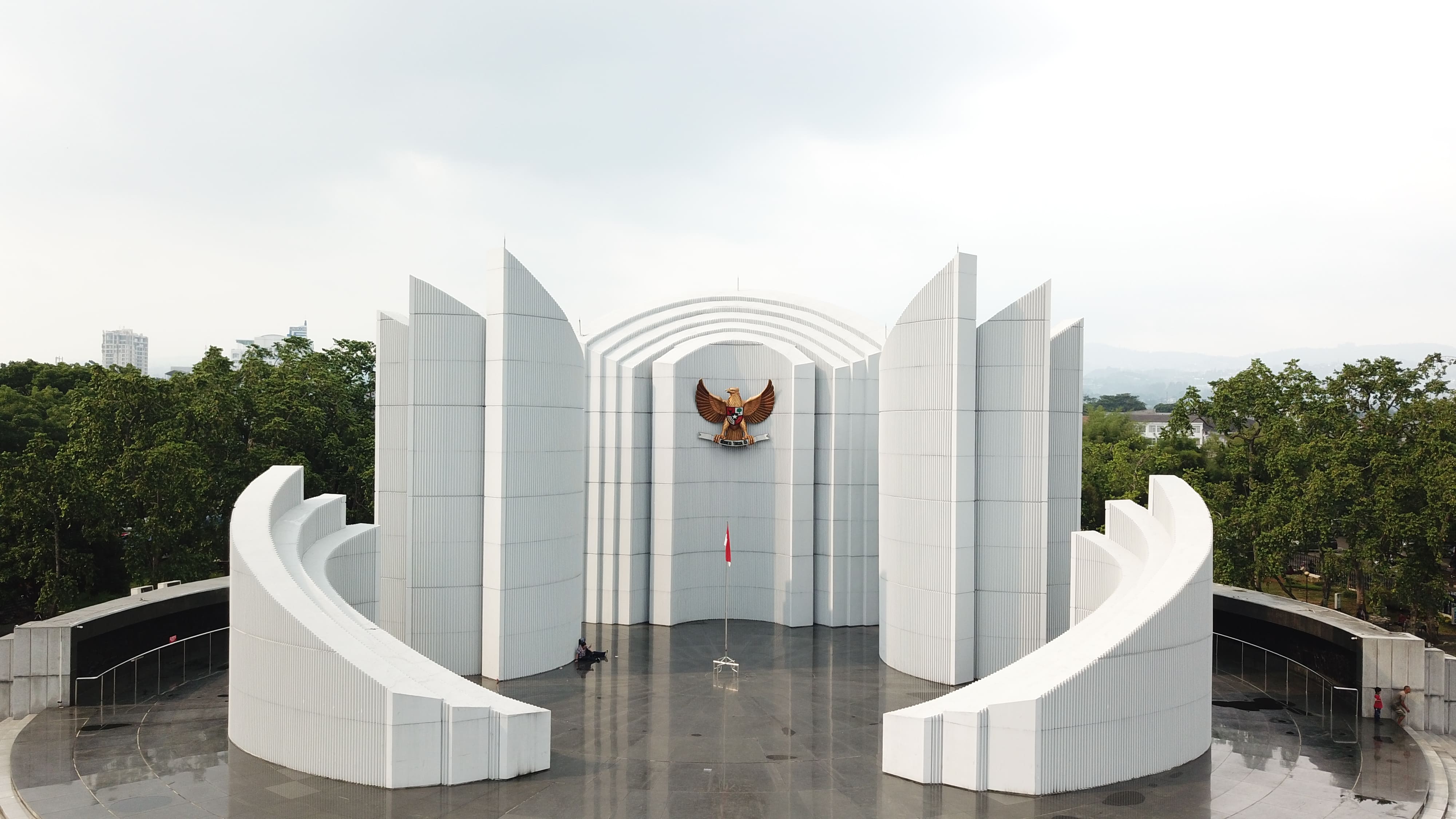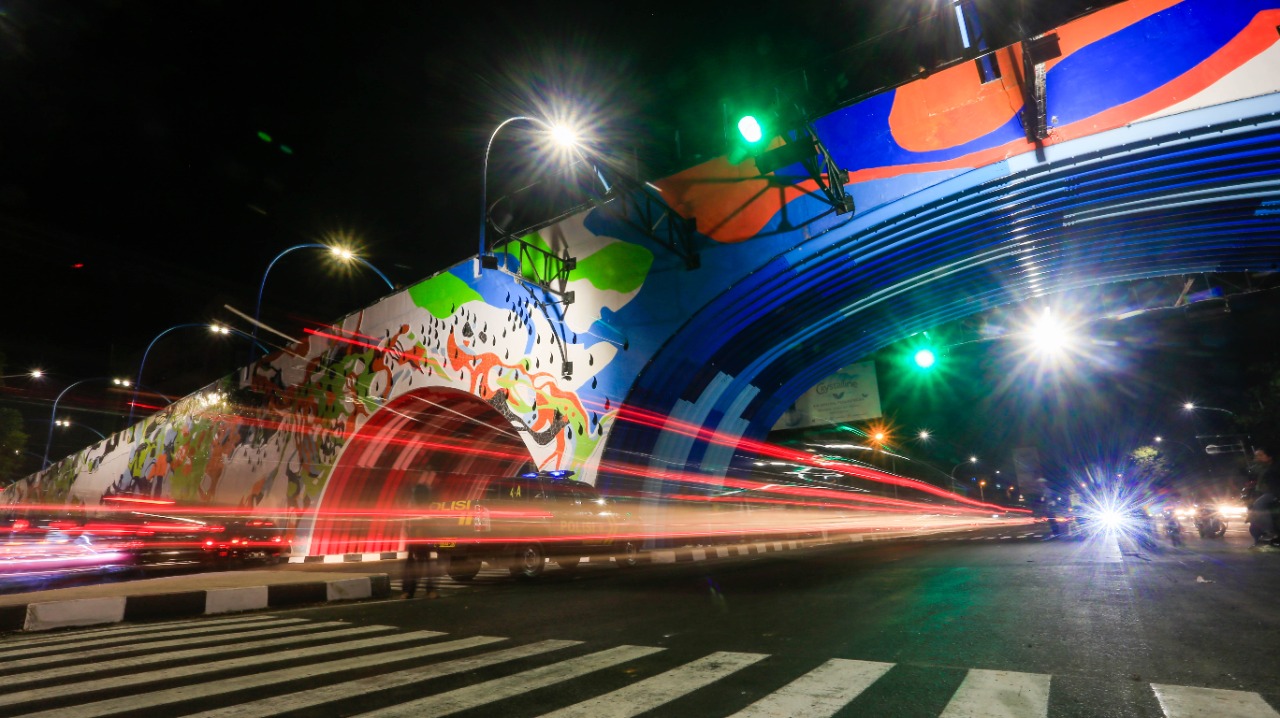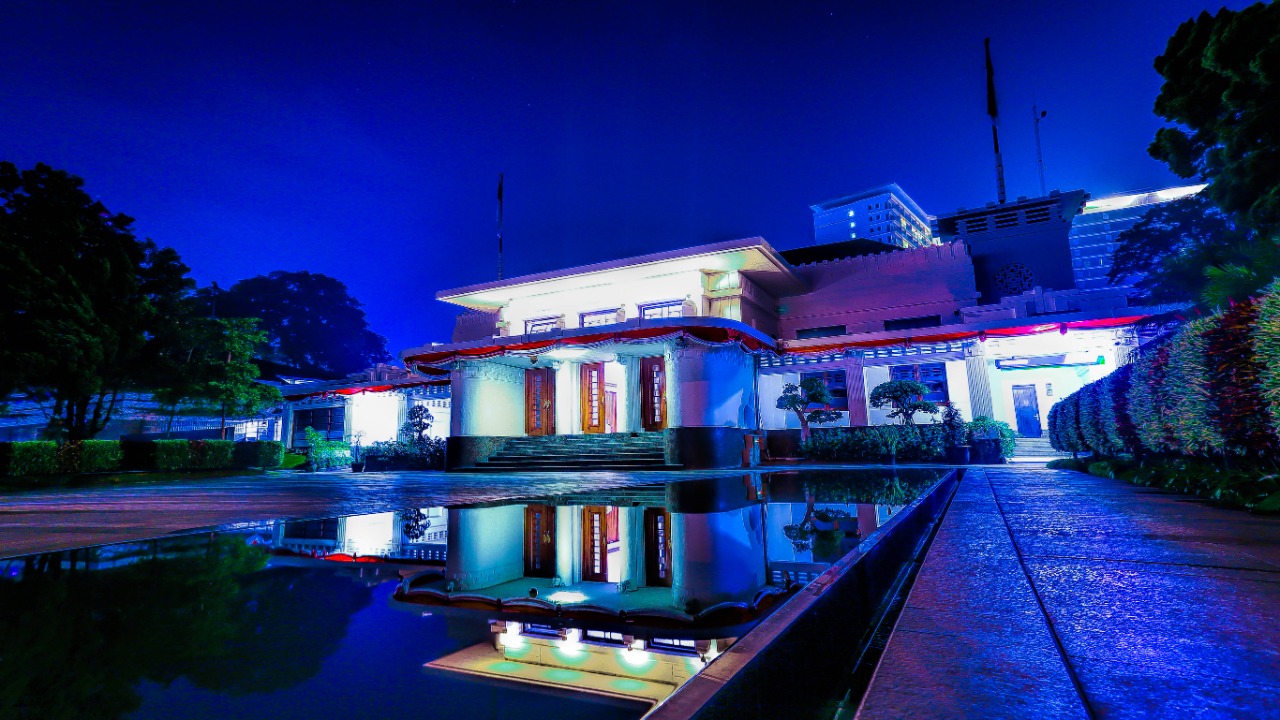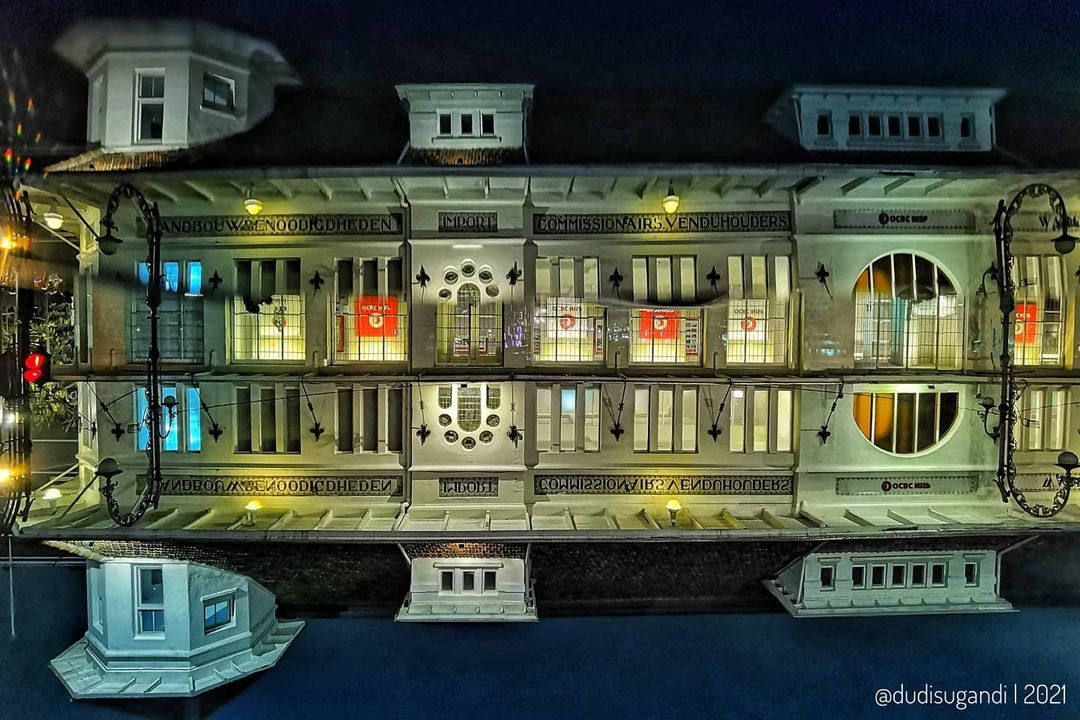Bandung offers a plethora of tourist destinations beyond its beautiful natural attractions. Visitors can explore historical sites, such as museums and landmarks that showcase the city's rich past. From colonial-era buildings to monuments commemorating significant events, Bandung's historical tourism spots provide a glimpse into its cultural heritage.
In addition to historical sites, Bandung is also known for its architectural wonders. Travelers can marvel at the unique blend of traditional Indonesian design and modern influences in the city's buildings and structures. Whether it's visiting iconic landmarks or admiring the intricate details of local architecture, architectural tourism in Bandung offers a feast for the eyes and a deeper appreciation for the city's aesthetic charm.
Furthermore, Bandung boasts a vibrant cultural scene that attracts tourists from near and far. From traditional performances to art galleries showcasing local talent, cultural tourism in Bandung offers a diverse range of experiences for visitors to immerse themselves in the city's artistic and cultural heritage. Whether it's exploring traditional crafts or attending cultural festivals, Bandung's cultural tourism spots provide a unique and enriching travel experience for all.
Jembatan Pasopati [Pasopati Brifge]
The bridge, which has been operational since 2005, was originally named after the two connected roads, Pasteur and Surapati (Pasupati). However, a significant change occurred on Tuesday, March 1, 2022, when the Governor of West Java, M. Ridwan Kamil, officially decided to rename the flyover road to Jalan Prof. Dr. Mochtar Kusumaatmadja.
This renaming was done as a gesture of recognition and appreciation for the remarkable contributions made by Prof. Mochtar Kusumaatmadja. He is widely acknowledged for his role in significantly expanding the territory of the Republic of Indonesia by 2.5 times through the innovative concept of Wawasan Nusantara, also known as the Archipelagic Outlook.
The decision to rename the flyover road to Jalan Prof. Dr. Mochtar Kusumaatmadja symbolizes a tribute to his legacy and the impact he has had on the nation. It serves as a reminder of his visionary leadership and his efforts in shaping the future of Indonesia through his strategic vision and dedication to the country's growth and development.
Gedung Sate [Sate Building]
The city of Bandung is home to the Gedung Sate, a building of great historical significance and iconic status. Serving as the official office of the Governor of West Java since 1980, this remarkable structure is situated at Jalan Diponegoro Number 22 in Bandung.
With its impressive design, the Gedung Sate comprises of four floors, a basement, and a unique space located at the top of the building. This architectural masterpiece was meticulously constructed between the years 1920 and 1924 under the guidance of a talented team led by Ir. J. Gerber, Eh. De Roo, and G. Hendriks. Additionally, the Gemeente van Bandoeng, chaired by V.L. Sloors, played a significant role in the creation of this magnificent building.
The Gedung Sate stands as a testament to the rich history and cultural heritage of Bandung. Its architectural brilliance, combined with its function as the Governor's office, has made it an iconic landmark in the city. Located at Jalan Diponegoro Number 22, this historic building continues to captivate visitors with its grandeur and serves as a symbol of pride for the people of Bandung.
The construction of Gedung Sate was part of the program to relocate the Dutch East Indies government's military center from Meester Cornelis to the Bandung area.
The building was designed as part of a government office complex for various government agencies (Gouvernements Bedrijven/GB).
At that time, Gedung Sate served as the office building for the Department of Public Works and Irrigation (Department Verkeer en Waterstaat), while on the northeast side, there was the building of the Main Office of the Postal, Telegraph, and Telephone Service (Hoofdbureau Post Telegraaf en Telefoondienst).
Gedung Sate showcases a hybrid architectural style, combining various architectural styles in different parts. The building incorporates the Renaissance model from Italy, with window designs inspired by the Moorish concept from Spain, and the roof adopts an Asian architectural style, reminiscent of the temples in Bali.
Furthermore, the building is influenced by Hindu and Islamic ornaments. The arrangement of the structure follows a symmetrical pattern, with repeated arch elements, creating a beautiful and unique rhythm.
At the pinnacle of the building's roof, there are ornaments in the shape of 6 satay skewers. These 6 satay skewers symbolize the 6 million Gulden that were used to construct this building.
This is what makes people still refer to this building as the "Gedung Sate" until now. According to the Gedung Sate guide, Dena Akhirawan, in the room at the top of this building, there is an alarm that will automatically go off when there is an attack from enemies.
With a loud alarm sound, the alarm can reach outside the city of Bandung. However, at present, the alarm is only activated once a year for just 10 minutes. And the sound of the alarm can only be heard around the building.
The historical significance and unique features of Gedung Sate continue to intrigue visitors and locals alike. The presence of the alarm system adds an element of mystery and security to the building, further solidifying its reputation as an iconic landmark in Bandung.
Monumen Laskar Wanita [Indonesia Womens Army Monument]
Situated on Perintis Kemerdekaan Street in the vibrant city of Bandung, there proudly stands a statue that pays homage to the valiant efforts of LASWI in safeguarding Indonesia's independence. This monument serves as a testament to the unwavering dedication and bravery displayed by the Indonesian Women's Army, which was founded in Bandung on October 12, 1945. Spearheaded by the visionary Mrs. Sumarsih Yati Arudji Kartawinata, LASWI played a pivotal role in the nation's struggle for freedom.
Nestled in the heart of Bandung, specifically in the Sumur Bandung District's Babakan Ciamis area, the statue commemorating LASWI's indomitable spirit serves as a poignant reminder of the sacrifices made by these remarkable women. Erected on Perintis Kemerdekaan Street, this monument stands as a symbol of the city's deep-rooted appreciation for the courage and resilience exhibited by LASWI during the fight for Indonesia's independence. It stands as a testament to the unwavering commitment of Mrs. Sumarsih Yati Arudji Kartawinata, whose visionary leadership paved the way for the establishment of LASWI.
Perched on Perintis Kemerdekaan Street, Bandung's bustling thoroughfare, a statue stands tall, paying tribute to the heroic endeavors of LASWI in safeguarding Indonesia's hard-fought freedom. This monumental structure, located in the Babakan Ciamis area of the Sumur Bandung District, serves as a constant reminder of the Indonesian Women's Army's pivotal role in the nation's struggle for independence. Founded on October 12, 1945, in Bandung, LASWI owes its existence to the visionary Mrs. Sumarsih Yati Arudji Kartawinata, whose unwavering determination and leadership propelled the organization to great heights.
LASWI is a fusion of Barisan Srikandi and Pemuda Putri (PPI), encompassing a diverse membership that includes young girls, housewives, and widows. The age range of its members typically falls around 18 years old.
The primary objective behind the establishment of Laskar Wanita was to provide support to the resistance movement against the occupying forces. During that period, the women of LASWI played a crucial role by fighting alongside their male counterparts, participating in various social initiatives, and occasionally undertaking intelligence-gathering missions.
Laskar Wanita's involvement in the struggle against the oppressors was marked by their active participation in combat operations, as well as their contributions to the community through social work. Additionally, their role as intelligence agents underscored their commitment to the cause of liberation and independence.
Monumen Perjuang Rakyat Jawa Barat [The West Java People's Struggle Monument]
The West Java People's Struggle Monument is located at Jalan Dipati Ukur No. 48, Bandung City. It is situated across from the Gedung Sate and in front of the Universitas Padjadjaran (Unpad) Campus, Bandung City.
The West Java People's Struggle Monument is located at Jalan Dipati Ukur No. 48, Bandung City. It is situated across from the Gedung Sate and in front of the Universitas Padjadjaran (Unpad) Campus, Bandung City.
The monument stands on a land area of approximately 72,040 m² with a building area of approximately 2,143 m². Its architectural style is a pointed bamboo shape combined with modern architecture. The monument was inaugurated by the Governor of West Java, R. Nuriana, on August 23, 1995.
The West Java People's Struggle Monument has a collection consisting of only 7 dioramas in the permanent exhibition space, which is not proportional to the size of the exhibition area. As a result, many areas of the permanent exhibition space remain empty and have not been filled with collections. The diorama collections in the permanent exhibition space are as follows:
Diorama of Sultan Agung Tirtayasa's Struggle Together with the People Against the Dutch Colonial in 1658
1. Diorama of People's Participation in Road Construction in Sumedang
2. Diorama of the Linggarjati Negotiations in 1946
3. Diorama of the Bandung Sea of Fire on March 24, 1946
4. Diorama of Long Mach Siliwangi in January 1949
5. Diorama of the Asian-African Conference in Bandung in 1955
6. Diorama of the Operation Pagar Betis (Operation Brata Yuda) in 1962.
The limited number of dioramas in the collection at the West Java People's Struggle Monument may not fully represent the rich history and struggles of the region. Efforts could be made to expand the collection and fill the empty spaces in the exhibition area to provide a more comprehensive view of the historical events depicted. By adding more dioramas or artifacts, the museum can enhance the visitor experience and offer a deeper insight into the significant moments in West Java's history.
In addition, there is a relief on the front wall of Monju. This relief depicts the history of the struggle of the people of West Java, starting from the era of kingdoms, the era of movements, the era of independence, and the era of defending independence against Dutch, British, and Japanese colonization.
Furthermore, Monju is also equipped with an audiovisual room and a library room that will be used as a means to provide information on the history of the struggle of the people of West Java for visitors.
However, the audiovisual information material is still inadequate. Monju also has a spacious courtyard, a prayer room, and comfortable toilets to provide services for visitors.
Fly Over Antapani
The construction of Fly Over Antapani took place in 2016 and was officially inaugurated by the Vice President of the Republic of Indonesia, Yusuf Kalla, on New Year's Eve 2017. The event was attended by the Mayor of Bandung for the period 2013-2018, Ridwan Kamil, the Vice Governor of West Java for the period 2013-2018, and also the Minister of Public Works and Public Housing, Basuki Hadimoeljono.
The Fly Over Antapani project was completed in 2016 and received its official opening on New Year's Eve 2017. The inauguration ceremony was graced by the presence of Vice President Yusuf Kalla, who represented the Republic of Indonesia. Also in attendance were Ridwan Kamil, the Mayor of Bandung from 2013 to 2018, and Basuki Hadimoeljono, the Minister of Public Works and Public Housing. This significant infrastructure development was a collaborative effort between the national and local governments to improve transportation in the area.
In 2016, the construction of Fly Over Antapani was successfully carried out, and it was officially unveiled on the eve of New Year 2017. The inauguration ceremony was attended by notable figures such as Vice President Yusuf Kalla, Mayor Ridwan Kamil, Vice Governor of West Java, and Minister of Public Works and Public Housing, Basuki Hadimoeljono. This project was a testament to the commitment of the Indonesian government to enhance the transportation infrastructure and facilitate smoother traffic flow in the region.
The Fly Over in Antapani is a New Year's gift for the residents of Antapani. Ridwan Kamil stated that the Fly Over, which was built over a period of 6 months, is a New Year's gift for the people of Antapani and its surrounding areas. He hopes that with the presence of this Fly Over, it can help alleviate the traffic congestion that often occurs in this area.
In terms of appearance or design, the Antapani Bridge is very attractive because the entire bridge is adorned with murals created by artists from the city of Bandung.
According to Emil (Ridwan Kamil's nickname), the Fly Over in Antapani was constructed using the new Foamy Concrete and Curved Steel technology. Compared to other Fly Overs of similar length, with this technology, the construction of the Antapani Fly Over is able to save up to 60% in construction costs and accelerate the construction time by up to 6 months.
The construction of the Fly Over Antapani has successfully alleviated the frequent traffic congestion in the Antapani area. This infrastructure project has garnered high appreciation from the Vice President of the Republic of Indonesia, Mr. Yusuf Kalla, who also attended the inauguration of the Fly Over Antapani. Not only is this bridge a new innovation, but it is also often referred to as the most artistic bridge in the entire Indonesia.
The Fly Over Antapani serves as a vital solution to the traffic problems that have long plagued the Antapani region. Its completion marks a significant milestone in the efforts to improve transportation infrastructure and alleviate congestion in the area. The presence of Vice President Yusuf Kalla at the inauguration highlights the importance and impact of this project on the local community.
This Fly Over not only provides a practical solution to traffic issues but also stands as a symbol of modernity and progress in Indonesia. The unique design and artistic elements of the bridge have captured the attention of many, earning it the reputation of being the most artistic bridge in the country. The Fly Over Antapani is a testament to the government's commitment to enhancing infrastructure and addressing the needs of the people.
Balai Kota Bandung
Located at Jln. Wastukancana No. 2 Bandung, there is the Walikota office complex of Bandung City. The Balai Kota Bandung, formerly known as Gedung Kopi (Koffie Pakhuis), stands proudly in this area.
The building used to serve as a warehouse for storing agricultural products, specifically coffee, and as a packaging place owned by Andries de Wilde. He was the first landowner in the Priangan region.
Today, the Balai Kota Bandung is a significant landmark in the city, representing the rich history and heritage of Bandung. It stands as a reminder of the past while serving as a functional Walikota office for the city administration.
The Bandung City Hall not only serves as the Walikota Office Complex of Bandung City but also provides recreational opportunities for both local residents and tourists visiting from outside the city.
In addition to its role as the administrative hub of Bandung City, the Bandung City Hall is a renowned tourist spot that attracts both city residents and visitors from other parts of the country. Apart from being the administrative center of Bandung City, the Bandung City Hall is a popular destination for leisure and recreation among both locals and tourists from outside the city.
Gedung De Vries Bandung
Situated on Asia Afrika Street, facing the Merdeka Building and the Asia Africa Conference Museum, the structure stands as a prominent landmark in the area. Initially, the edifice served as a general store established by a Dutch individual named Andreas de Vries, who made his way to Bandung in 1899 and was documented as the inaugural European settler in the locale.
Upon his initial settlement, de Vries inaugurated a modest grocery outlet on the periphery of Post Road (Grote Postweg), situated just north of the Alun-Alun (now recognized as the BRI Building). Subsequently, he leased a structure to the west of the Homann Hotel and relocated his enterprise. The store founded by de Vries, which marked the inception of general stores in Bandung, garnered widespread recognition across the city.
Prior to becoming De Vries Store, a Dutch house with an East Indies architectural style stood on this land, featuring several pillars at the front of the building. In 1879, the building was used by Societeit Concordia, which was the name of the association of Preangerplanters (plantation owners in Priangan) and the elite of Bandung City.
In 1895, Societeit Concordia moved to a building across the street (now Gedung Merdeka), and the old building was transformed into De Vries Store. This general store owned by Mr. de Vries provided various necessities such as food, fabric, shoes, and medicines. Some of these items were listed on the signboards, including cigars, art books and paper trade, agricultural supplies, auctioneers, alcoholic beverages, porcelain glassware, and furniture.
According to another perspective, de Vries was not just a general store but a kind of the first mall in Bandung City. The selling area at De Vries Store was once rented by clothing stores, butcher shops, and car dealerships. Many socialites of Bandung City at that time were regular customers of De Vries Store. The presence of this general store is believed to have been one of the catalysts for the development of Braga Street as a shopping district or center.
The De Vries Building underwent renovations in 1909 and 1920. The architectural design was entrusted to the architect bureau of Edward Cuypers Hulswit. To the east, a tower was built which still stands to this day. In the first decade of the 20th century, the glory of this general store began to decline, as new, larger, and more comprehensive stores emerged, one of which was Toko Onderling Belang on Braga Street (1913). After independence, the former De Vries Store building was occupied by Goodland Photo Studio, then Pepping Restaurant, and Padang Restaurant. By the 1990s, it was no longer functional and was in a state of neglect. In 2005, the building changed ownership to OCBC NISP. Until 2008, the De Vries Building still appeared abandoned. It was only in 2010 that OCBC NISP received government approval to renovate the historic building without altering its original form.
On April 29, 2011, the De Vries Building was inaugurated as the office of OCBC NISP Tbk. Not all rooms were used as operational areas for the bank. The ground floor of the De Vries Building was turned into a small museum containing antique items, such as banking tools used in the past. This museum is currently being considered for public opening.
The De Vries Building has a rich history that spans different eras, from its days as a thriving general store to its transformation into a bank office and museum. The preservation and renovation efforts undertaken by OCBC NISP have helped maintain the cultural heritage of the building. By repurposing some areas into a museum, the De Vries Building continues to serve as a reminder of its past while adapting to modern needs. The journey of this historic building reflects the changing landscape of Bandung and the importance of preserving architectural landmarks for future generations.






